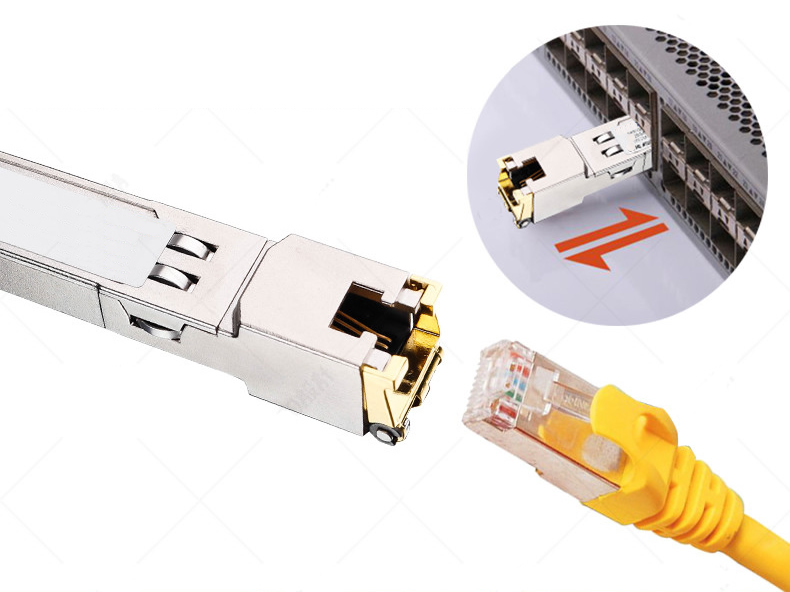In the realm of optical communications, the electrical interface optical module, often referred to as the optical-to-electrical module, plays a pivotal role. This article aims to delve deeper into the distinctive characteristics and widespread applications of this technology.
Firstly, let’s explore the characteristics of the electrical interface optical module.
One of the core features of the electrical interface optical module is its ability to convert optical signals into electrical signals. This crucial function enables the seamless transmission and processing of optical signals through electrical interfaces. This conversion process ensures efficient data exchange and communication in various application scenarios.
Moreover, the electrical interface optical module offers flexibility and compatibility. It supports a range of interface types and packaging formats, such as the RJ45 interface and SFP, SFP+ packaging types, allowing it to adapt to different devices and network architectures. Its compatibility with industry standards, such as SFP MSA and IEEE Std 802.3-2002, ensures seamless interoperability with other devices.
Furthermore, the electrical interface optical module is renowned for its high performance and low power consumption. Utilizing advanced optoelectronic conversion technology and optimized circuit design, it achieves high-speed and stable data transmission while maintaining low power consumption. This ensures excellent performance even during prolonged operation, reducing the system's thermal stress.
Lastly, the electrical interface optical module supports hot-swappable functionality. This means that it can be replaced or inserted directly into the system without the need for shutdown or restart. This hot-swappable feature significantly enhances the system's reliability and maintainability, reducing maintenance costs and improving overall system performance.

Now, let's turn our attention to the applications of the electrical interface optical module.
Firstly, within data centers and enterprise networks, the electrical interface optical module finds extensive use. It is commonly employed in switches, routers, and fiber transceivers to facilitate high-speed and reliable data exchange and communication. This enables efficient handling of large-scale data processing and transmission requirements.
Secondly, the electrical interface optical module plays a crucial role in metropolitan and wide-area networks. It is utilized to connect network nodes located in different geographical locations, enabling remote data transmission and communication. Its application enhances network transmission efficiency and reliability, reducing the overall cost of network construction.
Lastly, in the realm of industrial automation and the Internet of Things (IoT), the electrical interface optical module finds widespread application. It is used to connect various sensors, controllers, and actuators, facilitating data collection, transmission, and processing. Its application enhances the intelligence level of industrial automation systems and the flexibility of IoT applications.
In conclusion, the electrical interface optical module, with its unique optical-to-electrical conversion capabilities, flexibility, high performance, low power consumption, and hot-swappable functionality, holds a pivotal position in the field of optical communications. Its widespread applications in data centers, enterprise networks, metropolitan and wide-area networks, as well as industrial automation and IoT, demonstrate its significance and value. As technology continues to evolve and new application scenarios emerge, the electrical interface optical module will continue to play a pivotal role, contributing significantly to the development of the optical communications field.


